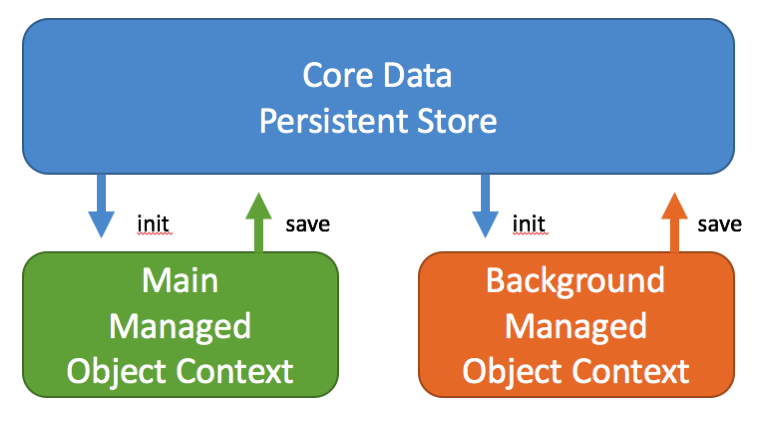Let’s say we have two different managedObjectContext (with one persistentStoreCoordinator).
The first one is used across the app for most quick fetches:
var mainManagedObjectContext = NSManagedObjectContext(concurrencyType: NSManagedObjectContextConcurrencyType.mainQueueConcurrencyType)
mainManagedObjectContext.persistentStoreCoordinator = coordinator
And the second, running in the background, for the queries that take a long time:
var backgroundManagedObjectContext = NSManagedObjectContext(concurrencyType: NSManagedObjectContextConcurrencyType.privateQueueConcurrencyType)
backgroundManagedObjectContext.persistentStoreCoordinator = coordinator
When they are initialized both contain the same data. However once changes are applied to one of them -in this example the main- like adding, changing or deleting rows, the other will not know -in this example the background/private one-.

Therefore if we add objects to the main managedObjectContext, when we fetch the backgroundManagedObjectContext we will not get them.
How do we fix this? Well first we have to save the changes of the objectContext that was modified. We do so by adding once we’ve finalized the changes:
//Commit changes
do {
try managedObjectContext.save()
}catch{
print(“ERROR: Cound not save Core Data”)
}
At this point we have saved the changes in the Persistent Store. We still have to ask the backgroundObjectContext to get them from the persistent store thought. For that we will use the automatic notification “NSManagedObjectContextDidSave”.
In the class where the backgroundThread is contained we will add an observer for the notification (note that we’re passing as object the context that was modified):
//Handle changes in core data for background thread
NotificationCenter.default.addObserver(self, selector: #selector(AppDelegate.handleMainCoreDataChangeInBackgroundManagedContext(notification:)), name: NSNotification.Name.NSManagedObjectContextDidSave, object: managedObjectContext)
}
And then we will add the function that will syncronize the backgroundThread, in this example:
func handleMainCoreDataChangeInBackgroundManagedContext(notification: Notification){
managedObjectContextBackgroundThread?.mergeChanges(fromContextDidSave: notification)
}
That’s it! Now when you query the background thread you’ll get the same information as you have in the main one.
You can read more about NSManagedObjectContext in Apple Docs.
Questions / comments? I’m at @MarcMasVi
Marc
Note: using two contexts is very powerful when used in combination with dispatchqueues.
DispatchQueue.global().async {
//Query here in background context & save if applicable
DispatchQueue.main.async {
//Refresh UI & query main context & save if applicable
}
}
